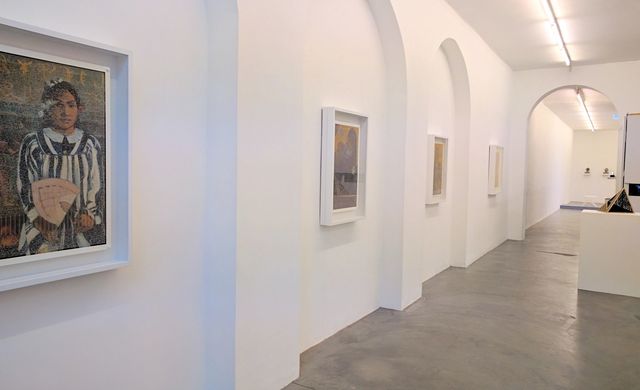

In her work Zelinskie is attempting to transcribe our rich cultural heritage in a way that our future robot overlords might comprehend. She feels that as we are nearing a technical singularity it is of the utmost importance to find a way to preserve our creative spirit and to teach machines about aesthetic as well as poetic values. Using the full potential of the creative tools available to digital natives she creates highly detailed and intricate 3D printed sculptures and laser-cut canvasses. Although their physical from might be solid, the creation of these pieces is based on virtual coding languages. Reverse Abstraction describes the process of translating recognizable cultural icons to a digital image constructed out of a binary or hexadecimal code and then using said code as the main structure of a representation of this icon in a physical form. These works constitute an extreme question of perception; what does a non-human artificial intelligence register when experiencing art? Virtual reality, streaming, 3D rendering and the integration of mobile devices into daily life are rapidly blurring the boundaries of reality within contemporary society. As technology documenting and digitalizing the physical world becomes more and more advanced one has to consider which elements of this world are registered and what language is used to do so.
Take for instance Zelinskie's interpretations of works by Paul Gauguin. This French post-impressionist painter became famous with his search for a simple, almost primitive core of human experience for which he developed a deceptively clear visual language. His vibrant and colourful works with bold, sensual figures present the viewer with imagined tribal scenes loosely based on his travels to Tahiti heavily influenced by a projected purity and naivety. Although many of his works might not appeal to post-colonial sensitivities he did find a suitable language to translate a primal sense of humanity to the rich and cultured of his day. In a way Zelinskie has appropriated his mission to suit the tastes of a robotic ruling class. Zelinskie's versions of some of his key works share the same dimensions and composition as the originals and remain recognizable to the human eye. However, in stead of searching for a way to convey emotion with a brush stroke, Ashley wants to translate the brush stroke to the calculating comprehension of a digital observer. She has found a way to deliver the recognition and perhaps pleasure of art to both human and mechanical eyes.
Ashley Zelinskie works and lives in Brooklyn, New York. There she runs the Active Space, a progressive arts center and studio complex. She is a founding member of the Lady Tech Guild and has collaborated on events with Makerbot Studios, Shapeways, Google and recently NASA. In 2014 she was a resident at The New Museum Incubator project and she won the Adobe and Shapeways Ultimate Design Award for Iconic 3D Print in that same year. Her work is part of the permanent collection of the US consulate in Saudi Arabia and the Code.org collection in Seattle amongst several other private and institutional collections. Articles about her work have been written by VICE, Hyperallergic and the New York Times. Reverse Abstraction will be her first solo exhibition at TORCH gallery Amsterdam. For further information on her work please visit: ashleyzelinskie.com